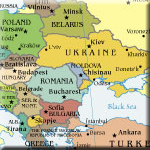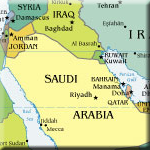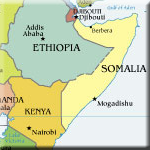




The cost of a recovery program as described in the preceding chapters is entirely dependent on individual circumstances. Typically, the cost will increase in proportion with the length and intensity of the preceding conflict, the size of the country and its level of development. Program costs may reach from a few hundred million to more than ten billion dollars.
However, there is no correlation between the size and cost of the program and the probability that it will be fully funded by the donors. Even a small program may not be fully financed if none of the major powers gives it strong political support and if the suffering of the people has not been extensively covered by the media. On the other hand, the relatively large program for Bosnia, more than five billion U.S. dollars over four years, was fully funded mostly with grants because the U. S. and the E. U. strongly supported it, pulling other donors along, and because there had been years of extensive media coverage of the war and its victims.
Even if sufficient financing is available as was actually the case for Bosnia and was promised more recently for Afghanistan, one will probably find a large and systemic discrepancy between the needs of the country and the donors’ preferences for financing. As a rule, the post-conflict government needs cash to pay for essential expenditures as described in Chapter 7. It also needs cash or something close to it to finance the most important part of the recovery program, namely the recovery and development of productive activities(9). The donors, on the other hand, have a strong preference to finance highly visible structures and equipment of all kind, leaving essential parts of the program underfunded. The donors’ preferences are largely determined by the business interests of their domestic suppliers of equipment, construction services, consulting, etc. They are also influenced by the media who want to show pictures of the donor country’s contribution to reconstruction and who are always eager to point to an abuse of donor money even if it is an isolated event.
Donor governments tend to give in to these pressures sometimes against their better knowledge and nearly always against their enlightened self-interest: by financing more sophisticated equipment than the post-conflict country can use and maintain and by leaving essential parts of the recovery program un-funded or under-funded, donors severely undermine from the beginning the post-conflict country’s chance for a successful recovery and for longer-term stability and development. By giving in to short-term pressures of suppliers and the media, donor governments contribute to the perpetuation of poverty and instability in many parts of the world. Recent events have renewed widespread interest in understanding the origins of conflict. One would hope that this will also lead to a re-assessment of donor priorities and a strengthening of aid coordination as outlined in the following paragraphs.
Even a well-funded recovery program can be unsuccessful if it is not carefully implemented, as happened more than once in the past.
Probably the greatest problem of the current system of donor assistance is the dispersion of responsibility and the lack of leadership. Today’s so-called “donor coordination” consists essentially in representatives from various donor countries and agencies politely talking to each other, without anyone being accountable for successful implementation of either parts of the recovery program or the whole program. The time has come for donors to agree for each recovery program on a lead agency. That lead agency must be given authority to influence the allocation of donor funds to individual parts of the recovery programs and, in extreme cases, to decide a re-direction of donor funds. It would also be accountable for achieving measurable results in terms not of dollars spent, but of output achieved such as the number of pupils and students going to adequately equipped schools, the number of small enterprises created, the amount of electricity generated, etc.
The lead agency must obviously be a capable and competent institution with significant resources. None of the existing international institutions is ideally suited for the task. Despite its various shortcomings, the World Bank is probably the best candidate to take that responsibility in most areas of competence, assuming it adopts some changes in its recommendations for economic policy and in its administrative procedures, mainly on procurement. The IMF, while not without fault, is particularly competent in matters concerning a post-conflict government’s budget and it’s funding, and the World Bank, if appointed lead agency should seek the IMF’s assistance and concurrence in this field.
Durable results can only be achieved if local institutions are developed. Consequently, the lead agency should work closely with governments and other local authorities in the implementation of projects and programs. Local authorities have in effect the ultimate responsibility in the implementation of World Bank projects. That method of implementation should be generally used, even if it is sometimes time-consuming and cumbersome.
Only in emergencies is it legitimate for aid agencies such as UNHCR to implement their program directly and with little co-ordination with local authorities. Also, the creation of specialised local agencies for the purpose of implementing a recovery program should be avoided. These specialised agencies tend to be fully functioning at about the time implementation of a recovery program draws to a close, at which time they become redundant, while permanent government institutions have received little strengthening through the recovery program and the effort of implementing it.
Speed can be crucial in particular in the first phase of program implementation when it is critically important to get seeds to the farmers in time, to supply non-contaminated drinking water, to provide shelter for people before the onset of cold or rain, etc. Conventional procurement methods, which is, inviting and evaluating bids made on the basis of detailed bidding documents, are to slow to deal with emergency-type situations. In spite of their numerous drawbacks, freely negotiated contracts may have to be awarded to selected competent suppliers to deal with emergency-type situations during the first few months after the end of war for contract periods of not more than six to nine months. Beyond that, competitive bidding should prevail. Using simplified procedures is in many cases desirable, but major works, such as re-building collapsed large bridges or re-constructing power plants should be awarded by following fairly strictly the rules of international competitive bidding. The speed at which that can be done depends on the amount of detail contained in the recovery programs. That program will not normally contain any bidding documents, but it should be sufficiently detailed to allow the identification of individual packages for procurement and financing, enabling individual donors to choose what they want to finance and facilitating co-ordination between donors.
A recovery program as here proposed will include significant amounts of support in cash and probably even larger amounts of tradeable goods. That calls for close control of what happens to that cash and those goods. Many donors have in the past been negligent in this regard and significant amounts, mainly of tradeable goods, have disappeared without leaving a trace, contributing to so-called “aid-fatigue”. That does not need to be so. Bilateral donors are frequently reluctant to openly exercise close control over the activities of a newly sovereign government, but multinational agencies suffer less from that handicap. The lead agency should therefore be entrusted by the donors to design adequate control systems, to supervise their functioning and to report periodically back to the donors. If such a system is being put in place, it would give great comfort to individual donors and should make it much easier to fully finance a well-balanced recovery program.
One last remark: there will of course be surprises during implementation of the program, some good, some bad. Unexpected developments should be dealt with one by one as they come up. In addition, fairly frequent stocktaking of progress, maybe twice a year for the first two or three years and less frequently thereafter, is highly desirable. These reviews of the overall program would assess progress made, or lack thereof, the impact of new developments, additional actions needed and their cost. The corresponding progress reports would be of considerable help for both the post-conflict government and the donor governments. A final report, one hopes, will conclude that the post-conflict country is now firmly launched on the path of sustainable development.
(9) See Chapter 9, Restarting the Economy: The Productive Sectors